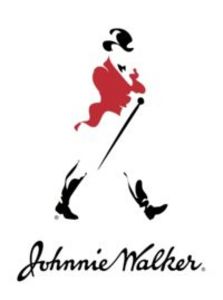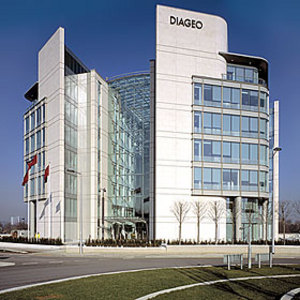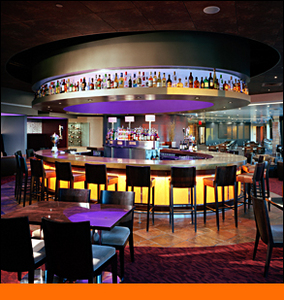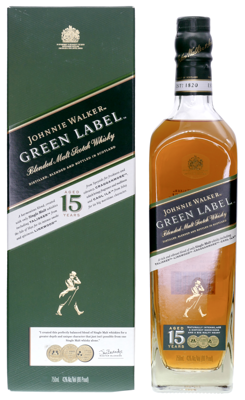|
|
Release Notes
Our only Scotch blended entirely with single malts. Johnnie Walker Green Label is a hidden gem with vibrant secrets to reveal. And with malts from the four corners of Scotland, aged for at least 15 years, it captures the distinct flavors of each landscape in perfect balance. A whisky that’s in harmony with nature.
Johnnie Walker
A harmonious blend, created with only single malt whiskies including Talisker from the Isle of Skye for its intense smoke and spiciness, Linkwood from Speyside for freshness and vibrance, Cragganmore, which brings fragrance and maltiness and Caol Ila from Islay for its big maritime character.
From the Bottle
First introduced in 1997 as Johnnie Walker Pure Malt 15 Year Old, it was renamed Johnnie Walker Green Label in 2004. Green Label is a blended malt whisky, meaning it is made by mixing single malts with no grain whisky added. All whiskies used are a minimum of 15 years old. Diageo discontinued Green Label globally in 2012 (except for Taiwan, where demand for blended malts is very strong) as part of a reconstruction of the range that saw the introduction of Gold Label Reserve and Platinum Label. The brand was reintroduced in 2016 and is again globally available.
Wikipedia
3rd Party Tasting Notes
Smell: Earthy aromas of light garden fruits, married with florals.
Taste: Rich wood notes with Highlands oak and cedar.
Finish: A smoky finish from peated island whiskies.
Taste: Rich wood notes with Highlands oak and cedar.
Finish: A smoky finish from peated island whiskies.
Johnnie Walker
The Brand: Johnnie Walker
| Established: 1860 |
| Silent since: False |
| Address: |
| → website |

On 1st July 2009, Bryan Donaghey, Diageo Managing Director for Global Supply Scotland, announced that Diageo intended to cease production of Johnnie Walker Whisky at the historic plant in Kilmarnock. Under a restructuring program across Scotland, production would be moved from the brand"s original home to Diageo plants in Leven, Fife and Shieldhall, Glasgow. The Johnnie Walker plant, the largest employer in the town of Kilmarnock, is intended to close its doors by the end of 2011.
News of the planned closure has had widespread media attention and condemnation from MPs, celebrities, as well as the townsfolk of Kilmarnock and whisky drinkers all around the world. Following the decision, a public campaign started to persuade Diageo as a company to reverse this decision. However on 9th September 2009 Diageo stated that they intended to press ahead with the move away from Kilmarnock and that the matter was "closed".
From 1906-1909 John"s grandsons George and Alexander II expanded the line and introduced the colour names. In 1908, when James Stevenson was the Managing Director, there was a re-branding of sorts. The whisky was renamed from Walker"s Kilmarnock Whiskies to Johnnie Walker Whisky. In addition, the slogan, "Born 1820 - Still going Strong!" was created, along with the Striding Man, a figure used in their advertisements for around fifty years.
Johnnie Walker White was dropped during World War I. In 1932, Alexander II added Johnnie Walker Swing to the line, the name originating from the unusual shape of the bottle, which allowed it to rock back and forth.

Prior to 1860 it was illegal to sell blended whisky. During that time John Walker sold a number of whiskies - notably his own Walker"s Kilmarnock. In 1865 John"s son Alexander produced their first blend, Walker"s Old Highland.
Alexander Walker first introduced the iconic square bottle in 1870. This meant fewer broken bottles and more bottles fitting the same space. The other identifying characteristic of the bottle is the label, which is applied at an angle of 24 degrees. The angled label means the text on the label could be made larger and more visible.
It is the most widely distributed brand of blended Scotch whisky in the world, sold in almost every country with yearly sales of over 130 million bottles.
Originally known as Walker"s Killme Whisky, the Johnnie Walker brand is a legacy left by John "Johnnie" Walker after he started to sell whisky in his grocer"s shop in Ayrshire, Scotland. The brand became popular, but after Walker"s death in 1857 it was his son Alexander Walker and grandson Alexander Walker II who were largely responsible for establishing the scotch as a popular brand. Under John Walker, whisky sales represented eight percent of the firm"s income; by the time Alexander was ready to pass on the company to his own sons, that figure had increased to between 90 and 95 percent.

Johnnie Walker is a brand of Scotch Whisky owned by Diageo and produced in Kilmarnock, Ayrshire, Scotland.
The company joined Distillers Company in 1925. Distillers was acquired by Guinness in 1986, and Guinness merged with Grand Metropolitan to form Diageo in 1997.
Johnnie Walker continues to be blended in Kilmarnock, with a large plant just north of the town"s railway station. The historic bonded warehouses and company offices (now local authority) can still be seen in Strand Street and John Finnie Street.
from Wikipedia
The Bottler: Diageo
| Established: 1997 |
| Silent since: False |
| Address: 8 Henrietta Place, London, W1G ONB, UK |
| → website |
Diageo also distributes Unicum, its lighter-bodied variant Zwack and Jose Cuervo tequila products in North America. However, Cuervo operates as a separate company in Mexico and is not owned by Diageo. Similarly Grand Marnier is distributed by Diageo in many markets, including exclusively in Canada, and a deal was reached in 2009 to significantly expand this partnership in Europe.
Furthermore, Diageo owns the Gleneagles Hotel.

Diageo was formed in 1997 from the merger of Guinness plc and Grand Metropolitan plc. The creation was driven by the two executives Anthony Greener and Philip Yea at Guinness plus George Bull and John McGrath of Grand Metropolitan. The product portfolios of Guinness and Grand Met were largely complementary with little overlap.
Diageo is the world"s biggest whisky producer with 28 malt distilleries and two grain distilleries.The company operates the Scotch whisky distilleries of Auchroisk, Benrinnes, Blair Athol (situated at Pitlochry), Caol Ila, Cardhu, Knockando, Glen Elgin, Clynelish, Cragganmore, Dalwhinnie, Glenkinchie, Glen Ord, Lagavulin, Oban, Royal Lochnagar, Strathmill, Talisker, Teaninich, Mannochmore, Mortlach and Glenlossie, which are sold not only under their own name but used to make the various blended scotch whiskies sold by the company, and owns the stock of many closed distilleries such as Port Ellen, Rosebank, Brora, Convalmore, Glen Albyn, North Brechin, Banff, and Linlithgow. The company have opened a new malt distillery adjacent to their maltings at Roseisle (1st new make spirit produced Spring 2009). This will be one of the largest malt distilleries in Scotland. The new building contains 14 traditional copper pot stills. An expansion programme is also underway at its Cameron Bridge Grain Distillery in Fife that will make it the largest grain distillery in Scotland. Diageo also owns the Port Dundas Grain Distillery in Glasgow, and jointly operates the North British Grain Distillery in Gorgie, Edinburgh, with The Edrington Group.

Diageo plc (LSE: DGE, NYSE: DEO) is the largest multinational beer, wine and spirits company in the world. The company is listed on the London Stock Exchange and has American Depositary Receipts listed on the New York Stock Exchange. The word Diageo was formed from the Latin dia (day) and the Greek geo (World), symbolising the use of the company"s brands every day, everywhere. Its head office is located in the City of Westminster in London. It is a constituent of the FTSE 100 Index.
Trivia:
- In December 2003, Diageo provoked controversy over its decision to change its Cardhu brand Scotch whisky from a single malt to a vatted malt (also known as a pure malt) whilst retaining the original name and bottle style. Diageo took this action because it did not have sufficient reserves to meet demand in the Spanish market, where Cardhu had been successful. After a meeting of producers, Diageo agreed to make changes.
- In 2006, the Cardhu brand quietly changed back to being a single malt.
- In July 2009, Diageo announced that, after nearly 200 years of association with the town of Kilmarnock, they would be closing the Johnnie Walker blending and bottling plant as part of restructuring to the business. This would make 700 workers unemployed and caused outrage from press, local people and politicians. A campaign against this decision was launched by the local SNP MSP Willie Coffey and Labour MP Des Browne. A petition was drawn up against the Diageo plans, which also involves the closure of the historic Port Dundas Grain Distillery in Glasgow.
- In February 2009 it was reported in the Guardian that the company had restructured itself so as to avoid paying tax in the U.K., despite much of its profits being generated in the U.K.
- Diageo is engaged in a tax scheme in the United States of America, commonly referred to as the "Rum Bailout", which will guarantee it USD$3 billion in revenues and profits.
- The National Puerto Rican Coalitionplans to run a series of ads in New York City and Puerto Rico urging a boycott of Diageo-owned alcoholic drinks to protest the giant British-owned corporation"s controversial production move of its Captain Morgan rum from Puerto Rico to the U.S. Virgin Islands.
from Wikipedia
